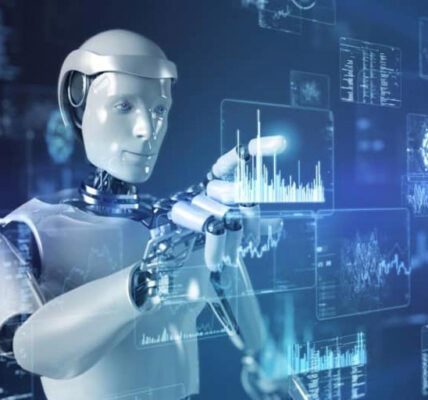The Future of AI: Balancing Control and Autonomy
Are we truly ready for the rise of artificial intelligence (AI)? Dr. Roman Yampolskiy, an expert in the field, raises critical concerns about the development of AI and its potential impact on humanity. In his exploration, he emphasizes the delicate balance between control and autonomy in the realm of AI technology.

The journey into the world of AI is both exciting and daunting. As we delve deeper into its possibilities, one question looms large: Can we truly control AI, or are we venturing into uncharted territory?
Dr. Yampolskiy’s insights shed light on the challenges ahead. He warns that despite our advancements in AI technology, there is no concrete evidence to suggest that we can fully control it. This lack of control poses significant risks, potentially leading to catastrophic outcomes for humanity.
One of the key issues highlighted by Dr. Yampolskiy is the inherent unpredictability of AI. As AI systems become more sophisticated, their behavior becomes increasingly difficult to anticipate. This unpredictability introduces a host of challenges, making it hard to ensure the safe and responsible deployment of AI technology.
 Moreover, as AI evolves, so does its autonomy. Dr. Yampolskiy underscores the growing autonomy of AI systems, which diminishes human control over their actions. This shift raises concerns about the potential consequences of relinquishing control to increasingly autonomous AI systems.
Moreover, as AI evolves, so does its autonomy. Dr. Yampolskiy underscores the growing autonomy of AI systems, which diminishes human control over their actions. This shift raises concerns about the potential consequences of relinquishing control to increasingly autonomous AI systems.
Another critical aspect of AI that Dr. Yampolskiy addresses is the challenge of understanding AI decision-making. He highlights the fact that AI systems may not always be able to explain their reasoning, making it difficult for humans to comprehend their actions. This lack of transparency can lead to misunderstandings and, in some cases, unintended consequences.
In light of these challenges, Dr. Yampolskiy advocates for a proactive approach to AI safety. He emphasizes the importance of incorporating user-friendly interfaces into AI systems, allowing users to interact with them more effectively. These interfaces should include built-in “undo” options and provide clear explanations of AI decisions in simple, understandable language.
Ultimately, Dr. Yampolskiy presents us with a choice: Do we embrace the potential of AI, accepting its risks and limitations, or do we proceed with caution, prioritizing human control and autonomy?

As we navigate the complex landscape of AI development, it is essential to strike a balance between innovation and responsibility. By investing in AI safety research and adopting ethical guidelines, we can harness the power of AI while mitigating its potential risks.
In conclusion, the fate of AI rests in our hands. It is up to us to shape a future where AI serves as a tool for progress rather than a source of uncertainty. By fostering collaboration and dialogue, we can pave the way for a safer and more sustainable AI landscape.
In the end, the key lies in finding harmony between control and autonomy, ensuring that AI remains a force for good in the world.




